19 tips for saving on heating — I’m dreaming of a warm Christmas
When you think about saving on energy, you probably think about big investments like solar-panels, floor-, wall- or ceiling-isolation and replacing window panes. Those cost time and money. I’ve collected a list of simple techniques and tools you can use to save on heating immediately.
May you have a warm and comfortable Christmas!
Update October 2022: I’ve added four tips see “👋 New tip”. Fuck Putin 🇺🇦
A list with tips to save on heating #
I’ve divided the list in three sections and chopped it up in bullet points. I’ve listed the time it takes to do it, the price and the expected returns.
I’ve tried to use ifferent shops for each link (I do not get commissions!), but please buy stuff at a local hardware shop instead of ordering it online!
All temperatures in degrees celsius. For this list I’m assuming you heat your house with radiators. I’m calling the big machine that heats up the water a CV, I think it’s called a boiler in English. I’m assuming you have a recent CV (less than 10 years old), and that it works on gas.
Do these things once: #
- Radiatorfoil (30 minutes, 20 euro, less than a year to get your money back). There are two types of radiator-foil: either you stick it on the wall, or you stick it to the back of the radiator with magnets. The latter one works best and looks a lot better. Stop heating your wall and heat your room instead!
- Tube isolation (30 minutes, 20 euro, less than a year). These grey tubes cost a euro per meter at my local hardware store. Make sure you get the right width. Easily cut them with a knife and tape it up. They keep the warmth inside the tubes. For attics and underneath your house, or rooms you don’t heat very often.
- Radiator ventilator (10 minutes, 50–105 euro, unknown ROI). It’s a simple idea: place ventilators under your radiators and the heat gets distributed more quickly in your room. I’ve got them in our living room and they make a much more comfortable home.
- Set your CV to 60 degrees (10 minutes, free, ROI immediately). Your CV most likely has two temperature settings: for warm tap-water and for radiators. The factory-settings are always too high and can be set lower. The tap-water can be set to 60 degrees (never lower because of legionella risk!). Changing the radiator-temperature is only useful for old CVs, most current CVs can regulate temperature themselves. For old CVs you can set radiator-temperarute to 60 degrees as well: lower in the summer (40 degrees) and higher in an extremely cold winter (80 degrees when it’s less than -5 degrees outside). If in doubt, ask about this during your yearly CV-checkup.
- 👋 Updated tip: Investigate ‘waterzijdig inregelen’ (half a day, 120 euro, ROI in one year). It is highly likely your radiators are not set to the most optimal setting. Optimizing the installation can be done manually, but explaining this goes way beyond this article 😅. You can get government subsidies for ‘inregelen’ if you do this together with a bigger investment like floor-isolation. A smaller step you can do very easily, is to adjust your radiator valves so the radiators work optimally (basically: do not open them fully!).
- Foil for single-pane glass (30–60 minutes, 20 euro, ROI in one year). If your house still has single-pane glass, it’s better to replace it with double- or triple-pane glass. But if that’s not possible, you can do a temporary solution with this foil. It’s easy, and even fun to do (no really!), all you need is scissors and a hair-dryer.
- Kill all drafts (30–60 minutes, 20 euro, ROI immediately). Any window with a small opening creates a draft. These self-adhesive strips stop those drafts. There are a lot of different types.
- Set thermostat to 18,5 degrees (1 minute, immediate ROI). You most likely have a thermostat in your living room. If you’ve got all the above measures done, you can live comfortably in an 18,5 degree room. Keeping a steady temperature is better than turning the thermostat up and down. If you go on holiday, set the temperature to 16 degrees. Radiators only heat up if the room temperature goes below your thermostat setting and they stay on for as long as necessary to reach the temperature. If you’re cold, you don’t need to turn the thermostat way up, just nudge it up with .5 degrees.
- 👋 Updated tip: Turn the thermostat down at night and on holiday. If you live in an old house (pre-1995), then it’s worth setting the thermostat lower during the night and when you’re on holiday, for example 15 degrees Celsius. It’s best to program your thermostat to do this for you instead of doing this manually. Set the thermostat 2–3 degrees lower than your ‘day temperature’, don’t go lower: heating up from a too low state will cost more than you saved!
- Bonus-tip: replace all lamps with LED (30–60 minutes, 10–50 euro, immediate ROI). Any lamp that’s not an LED is a power-waster. Replace them immediately. LEDs last nearly forever, so it’s worth using a more expensive brand (cheaper ones can introduce a flicker when you’re recording movies with your phone).
Keep doing these things: #
- Set radiators to low in your bedrooms and other rooms. It’s healthier to sleep in a room that has a temperature of 16–18 degrees (use thicker blankets instead of jacking up the radiator). Set radiators to the lowest amount you find comfortable, and don’t change them too often: a constant room-temperature is more efficient than changing the heat. Make sure no room ever goes below 0 degrees, otherwise your radiators will break!
- Shower less, and use low temperature. It’s healthier and better for your skin to shower less (every other day, for instance) and use lower temperatures. You can use a ‘shower timer’. Apparently ending your shower with a burst of cold water is good for you.
- Ventilate your rooms. Keep a window open in your bedrooms, and open a window for at least 20 minutes in your living room.
- Use an electric water boiler to boil water when you’re cooking: heating water in a pan on a stove is inefficient!
- 👋 New tip: capture solar heat during the day. If you have blinds or curtains, open them during the day if the sun is on the windows. This will capture solar heat. Dense (concrete, brick, etc) and dark-colored (black!) objects capture most heat.
- 👋 New tip: stop losing heat at night. Close blinds and curtains in the evenings and night. Windows lose a lot of heat. Best are insulating blinds or shutters that fit tightly into or around the window opening. Floor-to-ceiling lined drapes are a less-effective alternative, but are better than bare windows. Also add drapes in front of your outside-facing-doors! Source.
- 👋 New tip: local heating. Traditional heating works with convection, heating the air of an entire room so you feel comfortable wherever you are. But this is not always necessary. For instance, our family has breakfast in our living room, and then go to office/school/daycare. We spend about 45 minutes around the table in our living room in the morning. Do we really need to heat up the whole room for that? No. It can be more efficient to use a small infrared panel (very energy efficient, takes 10–20 minutes to heat up, use for long periods) or an electric fan (less energy efficient, direct warmth, use for short periods). This goes for your home-office as well. Infrared panels are very cheap and can look beautiful.
- 👋 New tip: stop losing body-heat. It might seem obvious, but keeping your body warm is a great way to save on your heating bill. No, you don’t need to wear a jacket in the house 🤦♂️ Invest in a beautiful sweater, tough-looking bodywarmer or fancy blazer. You can even get them heated. For your evening-tv Netflix-marathons you can snuggle under a fleece blanket (or an electrically heated one).
Do these things once a year: #
- Repressurize your CV (see below)
- Have a professional maintain your CV. This is compulsory! Also ask the maintenance person if your CV is set properly: is the outgoing water temperature 20% warmer than the incoming water? This is necessary to give the CV a high efficiency. Otherwise ask about “waterzijdig inregelen”. The professional can also repressurize your CV if you don’t want to do it yourself.
- Clean your radiators. Mainly for health-reasons, but I bet it helps with efficiency as well.

Addendum: taking the air out of the central heating and refill with water #
Especially in old houses the central heating may lose water pressure and the tubes get filled with air instead. This makes a ticking noise when the radiators are heating up and is less efficient. If the pressure is very low (below 1 bar), your CV can break!
Here are 8 simple steps to repressurize your CV:
- Check the water pressure: if below 1.5 bar, refill water first (see step 6)
- Turn on all radiators, set thermostat higher so hot water flows through all radiators
- Wait 30 minutes for the radiators to heat up
- For each radiator: use a special key (see photos below) and open the valve (see photo). Careful: the water is hot! You only need to open it a little bit: first air comes out, then it sputters, then water flows. Close the valve when the water flows! Start with the radiator that’s placed lowest in your house and work your way up. If no water starts flowing, you may need to fill your CV (step 6) before moving on to the next radiator
- Open the valve on your “expansion vat” (check photo below), and let all the air out, just like you did with the radiators. After letting the air out: tap on the top part and the bottom part of the vat. These parts should make different sounds, if they don’t, your expansion vat is broken…
- Refilling the central heating! This part can be tricky, read carefully:
- First locate these five things: the valve that provides water, the valve for letting in water into the CV, the hose, a bucket and a dirty towel (check the photo!).
- Connect the hose to the water inlet, open the valve and fill the hose with water (otherwise you’ll add air to the CV!), now connect the hose to the water inlet of the CV.
- If everything is connected, open the valve of the CV and let the water flow. Check the barometer: your pressure should be between 1,5 and 2 bar. Older CVs needed to be turned off for this, newer ones don’t.
- Turn off the valve for the water inlet AND the valve for providing the water. Keep your towel and bucket ready! Bend the hose close to the inlet, unscrew it, drop it in the bucket and let the water out
- Take the hose off of the inlet. Don’t leave it connected: you can develop legionella in there
7. Write down the date and the current water pressure and check again in a month. If the pressure dropped a lot, you may have a leak (call a professional). The pressure always varies a bit with temperature, so this is not an exact science!
The photos for repressurizing #
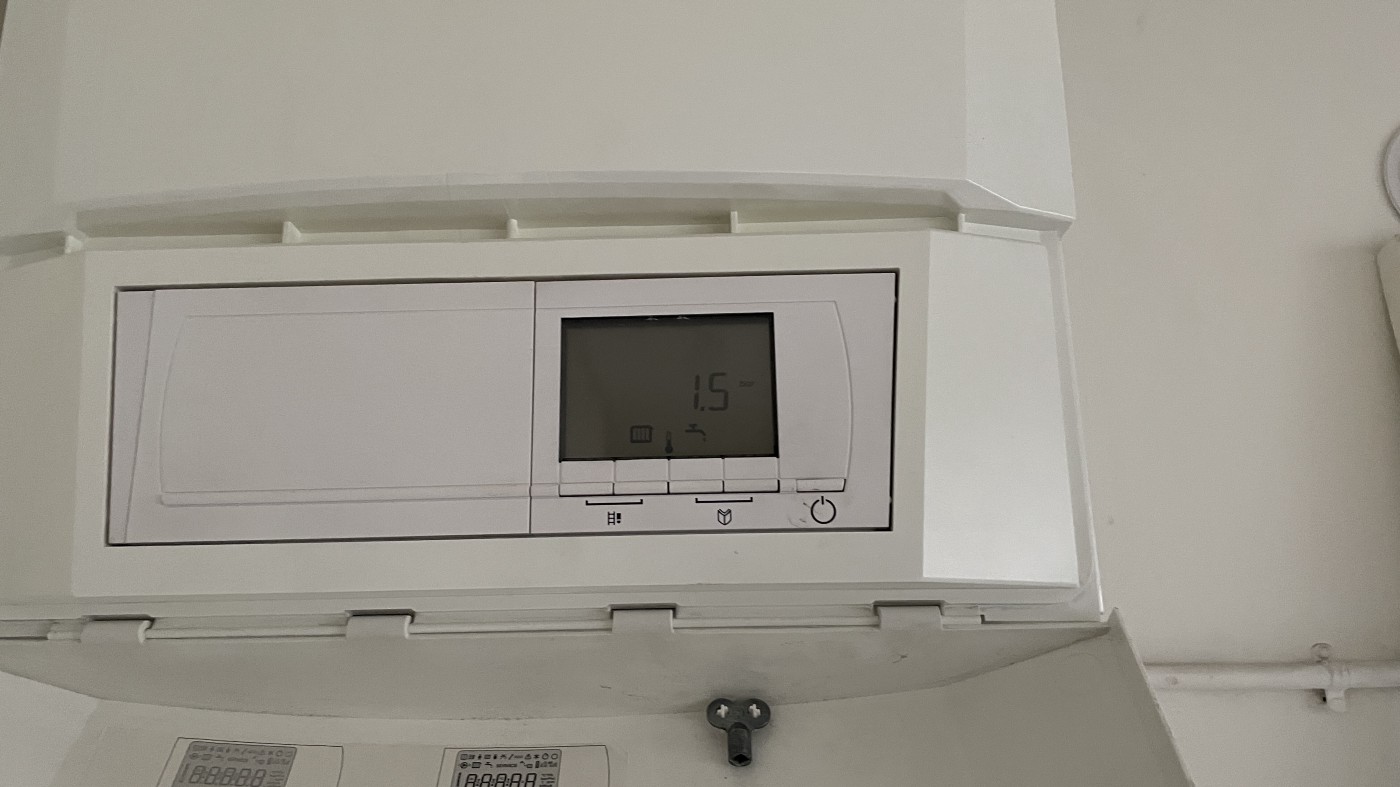
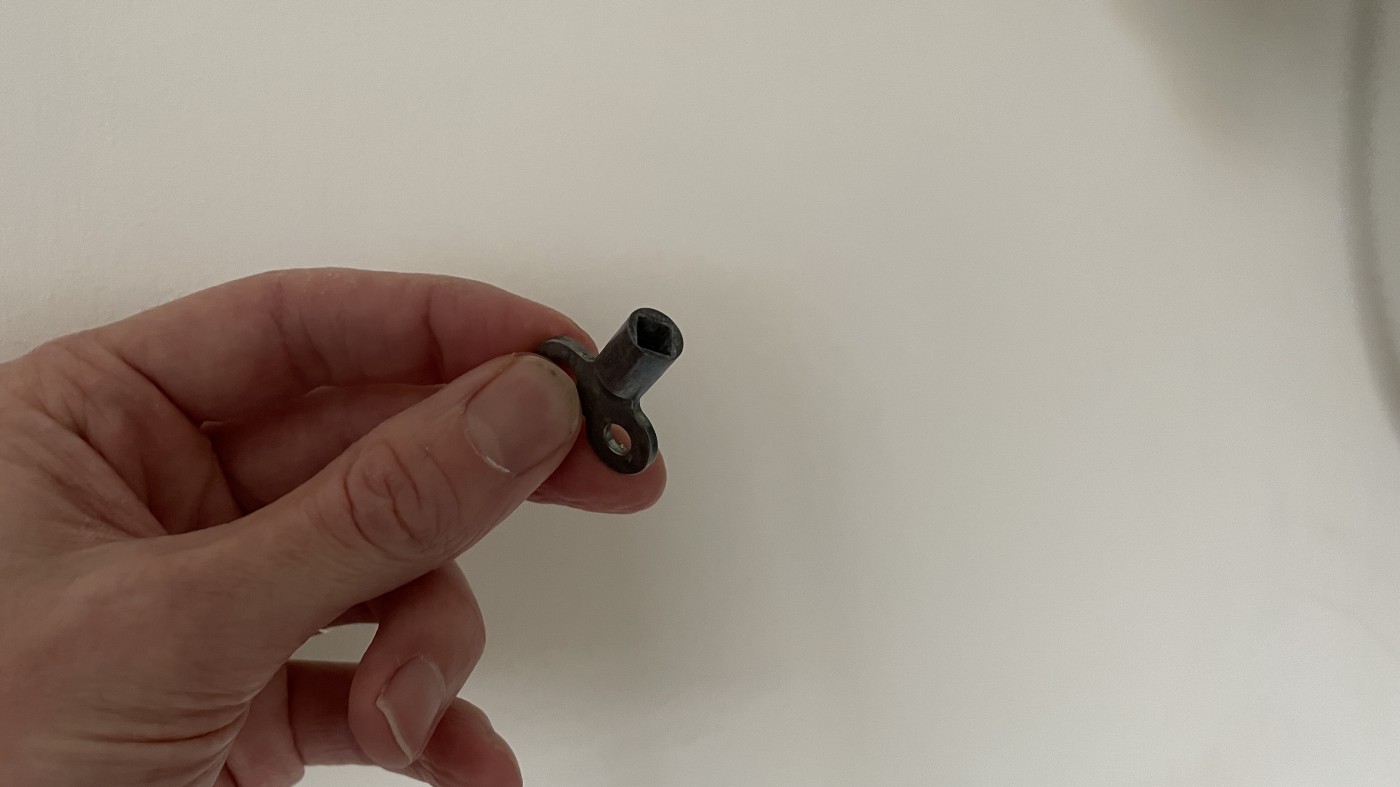
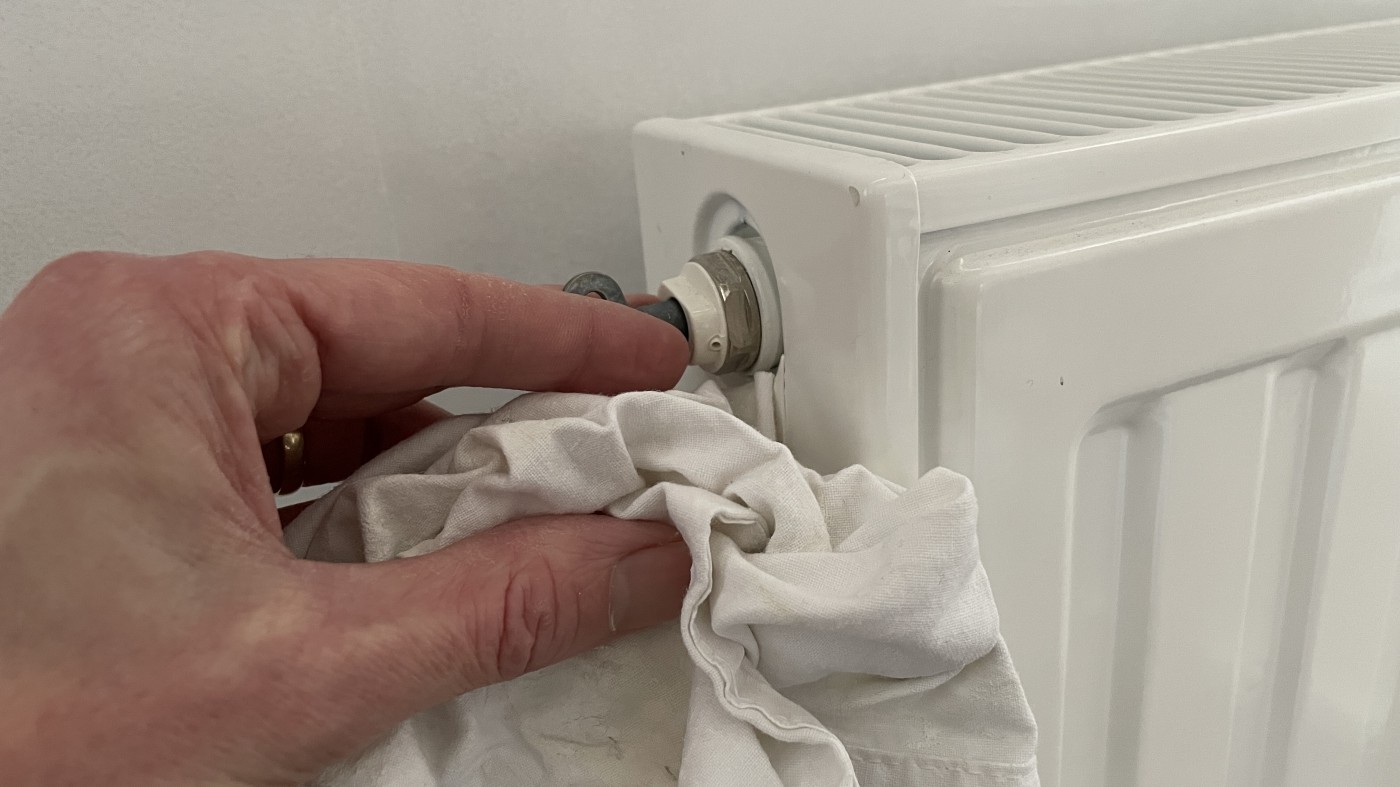
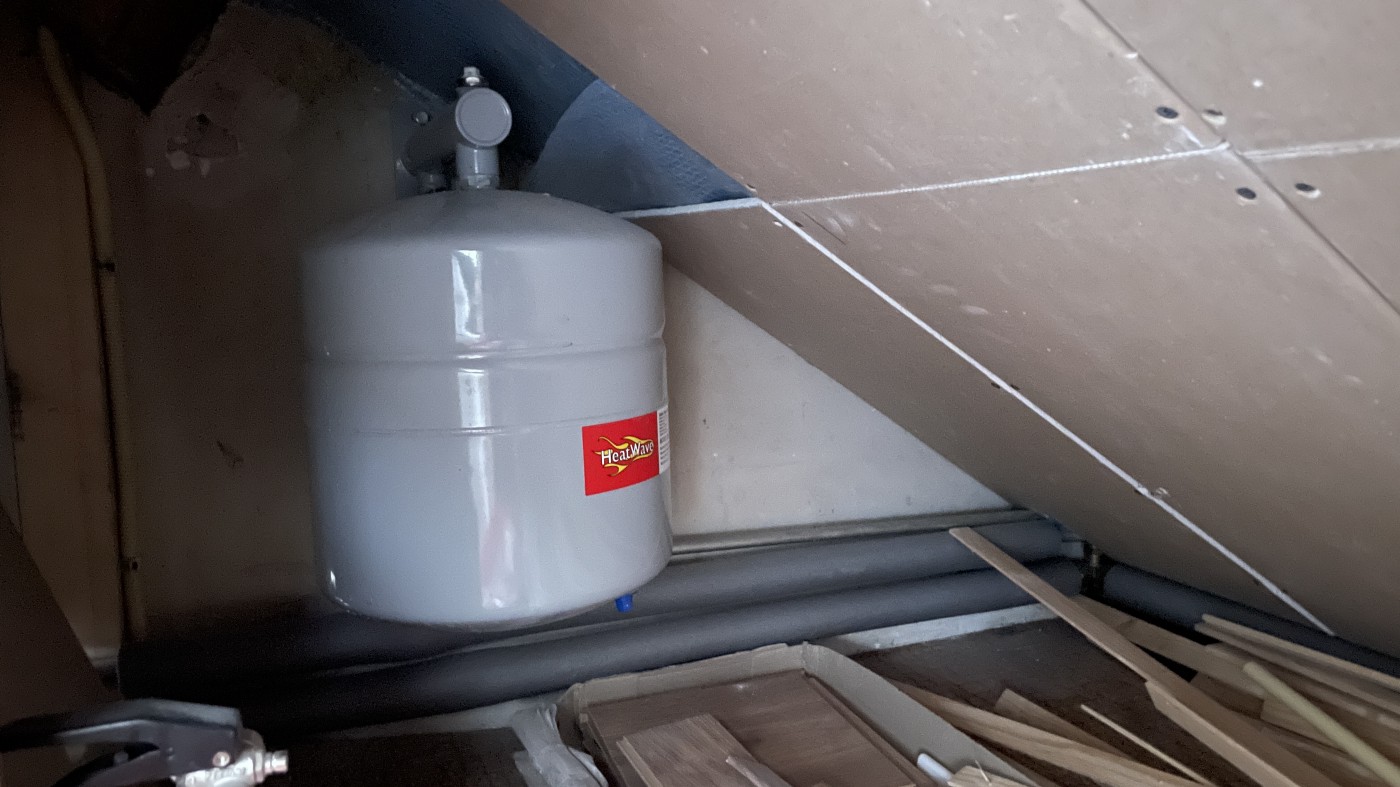
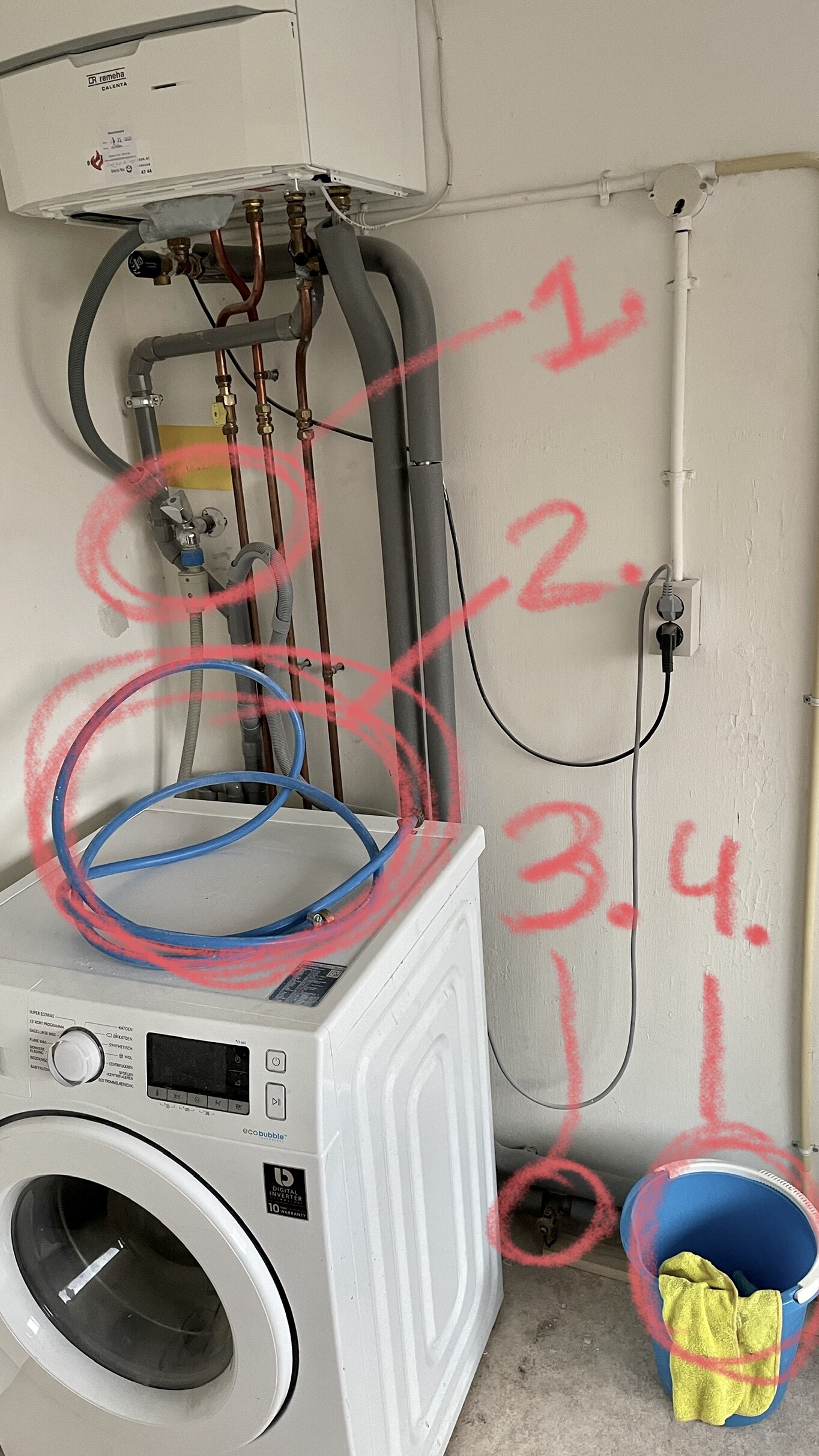
That’s it for my tips, please share the article if it was useful.
